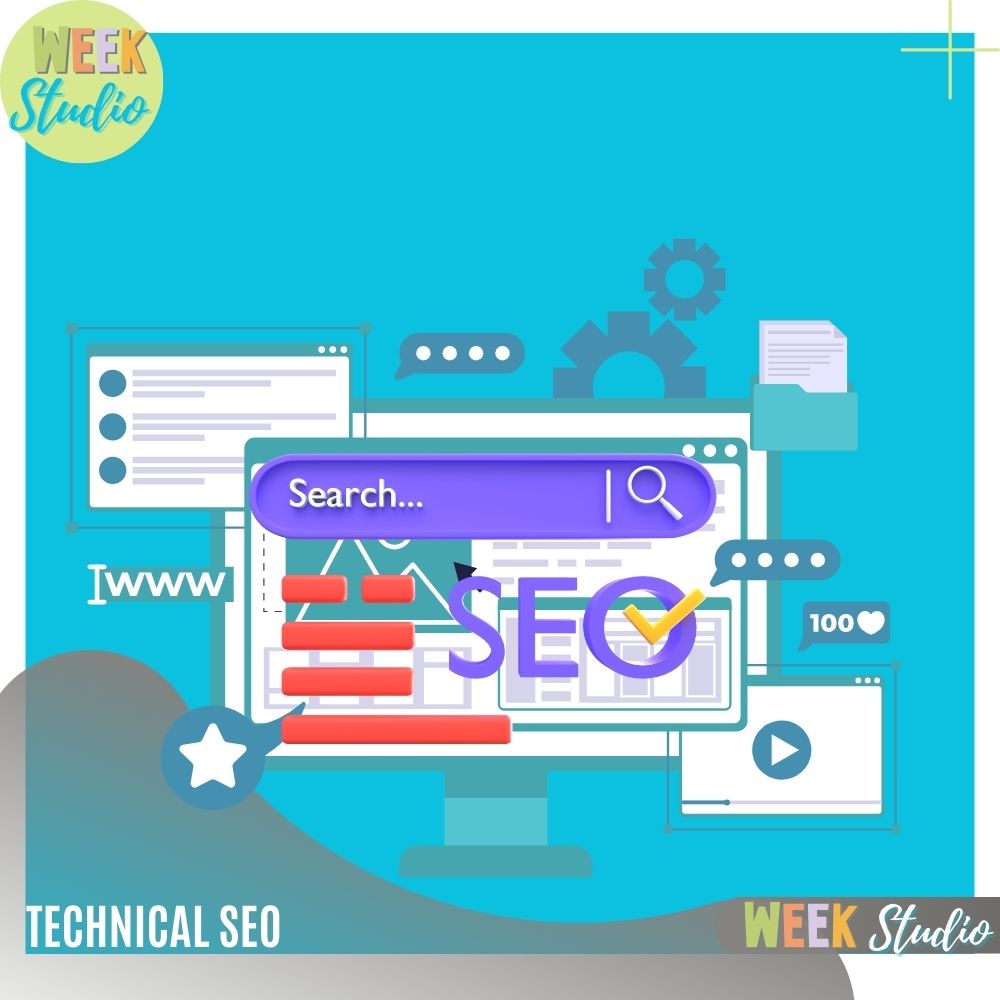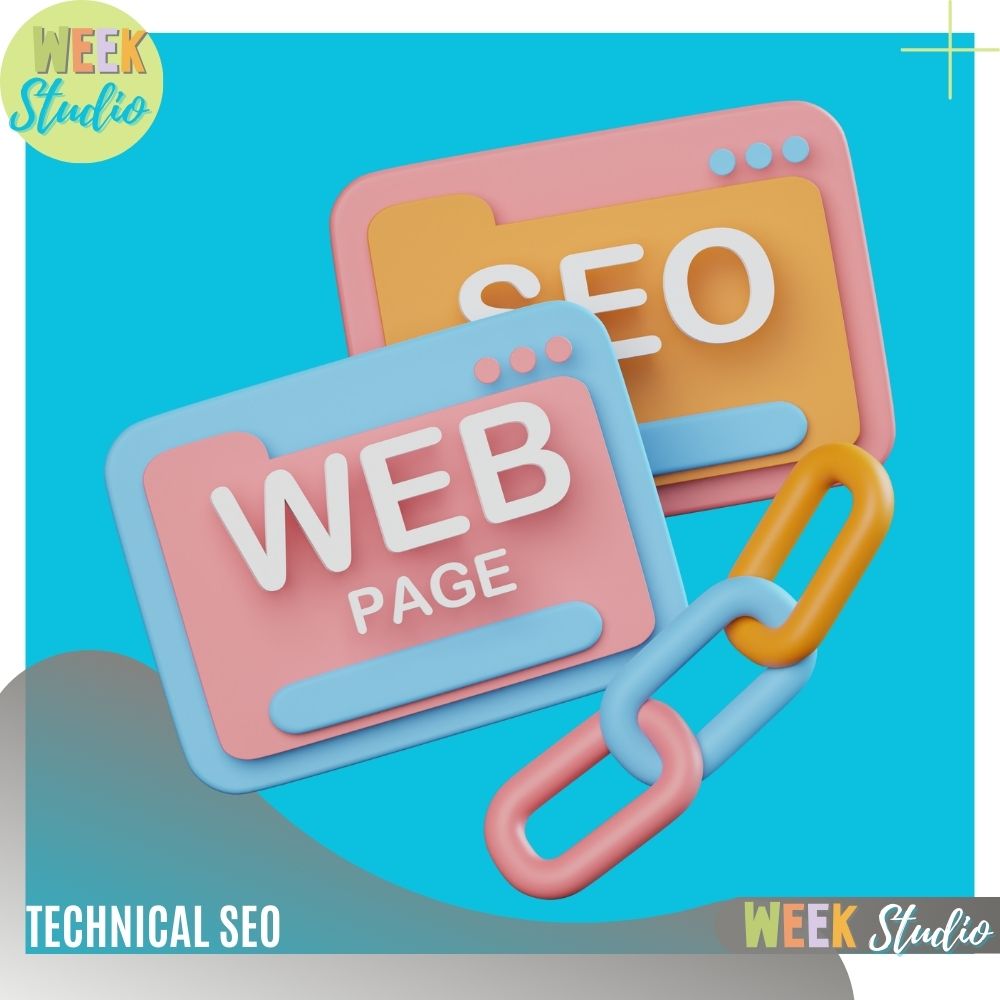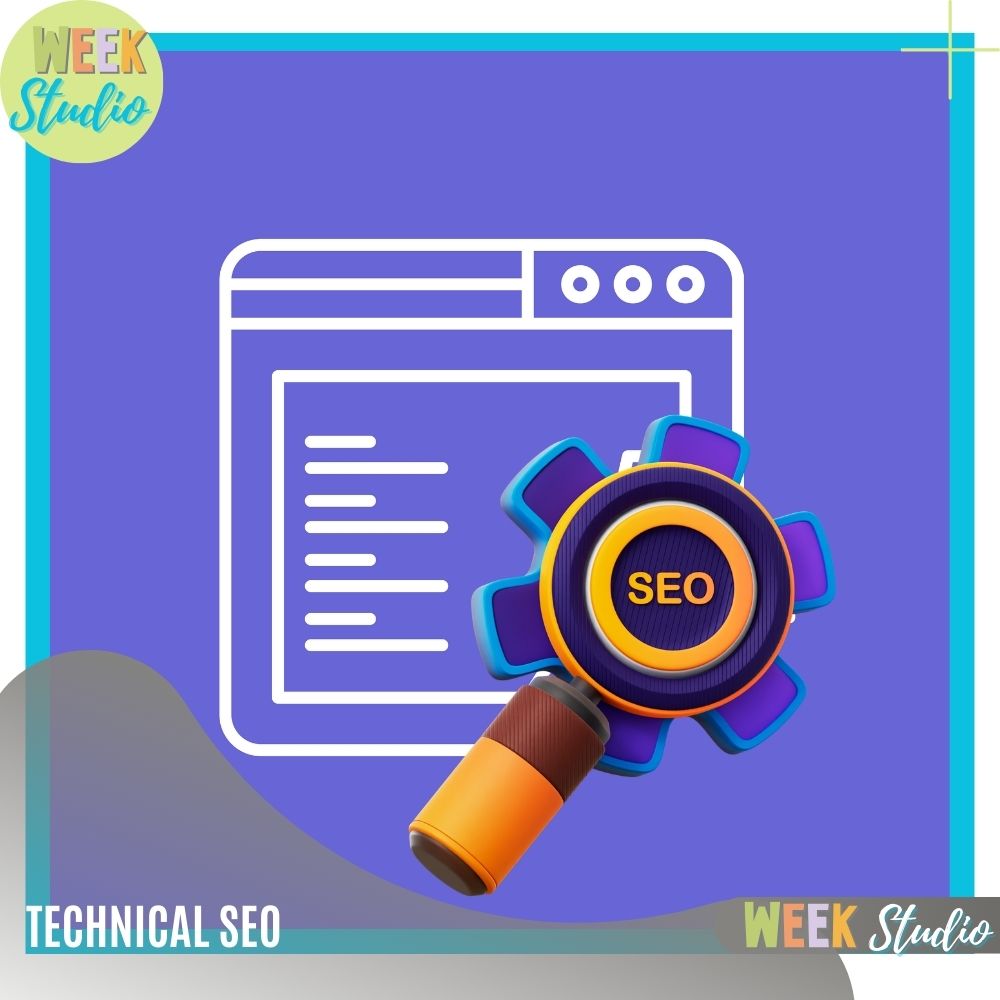Technical SEO is not just a buzzword, it’s the backbone of a well-optimized website. This facet of SEO delves into the mechanics that search engines use to crawl, index, and rank web pages. In this article, we’ll unravel the layers of technical SEO, exploring its significance, key components, and how it contributes to the overall success of a website in the digital realm. So, buckle up as we take a deep dive into the intricate world of technical SEO.
In the dynamic world of digital marketing, where the competition for online visibility is fierce, Search Engine Optimization (SEO) emerges as the guiding light for businesses seeking to stand out in the vast expanse of the internet. As websites strive to climb the ranks of search engine results, a crucial aspect comes into play: Technical SEO.
Technical SEO

As we embark on the journey of understanding technical SEO, it’s essential to grasp its definition and significance within the broader SEO landscape.
Definition and Significance
Technical SEO, in its essence, refers to the optimization of a website for the crawling and indexing phase performed by search engine bots. While on-page and off-page SEO focus on content quality and external factors, technical SEO deals with the behind-the-scenes aspects that impact how search engines perceive and rank a site.
The significance of technical SEO cannot be overstated. Imagine having an engaging and informative website, but search engines struggle to navigate it. Technical SEO ensures that search engine bots can effectively crawl, index, and understand the content on your site. This, in turn, enhances the chances of your pages appearing in relevant search results.
Differentiating from On-Page and Off-Page SEO
Before we delve deeper, it’s crucial to distinguish technical SEO from its counterparts: on-page and off-page SEO.
- On-page SEO This includes crafting compelling content, using strategic keywords, and optimizing meta tags.
- Off-page SEO is concerned with external factors that influence your site’s visibility, such as backlinks and social media signals.
While on-page and off-page SEO are pivotal, technical SEO provides the foundation that supports these efforts. Without a solid technical foundation, the best content and off-page strategies may not yield the desired results. Now, let’s explore some key aspects of technical SEO that contribute to this solid foundation.
Crawling and Indexing

To comprehend technical SEO fully, it’s crucial to delve into the fundamental processes that shape how search engines navigate and understand your website: crawling and indexing.
Explanation of Search Engine Bots
Crawling is the process by which search engine bots systematically navigate the web, moving from one page to another via links. Think of it as a digital spider exploring the interconnected web of information. These bots, also known as crawlers or spiders, are deployed by search engines like Google to discover and collect data from websites.
Once a page is crawled, the information is stored in the search engine’s index, a vast database containing details about the content of web pages. This leads us to the next crucial step in the technical SEO process.
Importance of Sitemaps and Robots.txt
For search engine bots to crawl and index your site effectively, providing clear guidelines is essential. This is where sitemaps and robots.txt files come into play.
- Sitemaps are XML files that outline the structure of your website, including all relevant URLs. By submitting a sitemap to search engines, you’re essentially providing a roadmap that aids in efficient crawling. This is particularly beneficial for large websites with complex structures.
- Robots.txt is a file that gives instructions to search engine bots on which pages of your site should not be crawled. It helps prevent unnecessary indexing of sensitive or irrelevant pages. However, it’s crucial to use robots.txt judiciously to avoid inadvertently blocking essential content.
Understanding and optimizing these aspects of crawling and indexing lay the groundwork for a technically sound website, ensuring that search engines can navigate your site seamlessly and index the most relevant content. Now, let’s explore another critical facet of technical SEO: website speed and performance.
Website Speed and Performance

In the fast-paced digital landscape, where attention spans are short and users demand instant gratification, the speed and performance of your website play a pivotal role in user experience and, consequently, in SEO.
Impact on SEO
Website speed isn’t just a user convenience; it’s a crucial factor considered by search engines in their ranking algorithms. Google, in particular, has emphasized the importance of page speed as a ranking factor. A slow-loading website not only frustrates users but may also lead to lower search rankings.
When search engine bots crawl your site, they assess how quickly it loads, as this directly influences the user experience. A sluggish website can result in higher bounce rates, lower user engagement, and a negative impact on your SEO efforts.
Tips for Optimizing Speed
Optimizing your website’s speed involves addressing various elements that contribute to its overall performance. Here are some actionable tips:
- Optimize Images: Compress and appropriately size images to reduce their impact on page load times.
- Minimize HTTP Requests: Each element on a web page, be it an image, script, or stylesheet, requires a separate HTTP request. Minimizing these requests speeds up page loading.
- Utilize Browser Caching: Browser caching allows frequently accessed resources to be stored on a user’s device, reducing the need to download them anew each time they visit your site.
- Enable Compression: Gzip or Brotli compression can significantly reduce the size of your CSS, HTML, and JavaScript files, speeding up their delivery to users.
- Use a Content Delivery Network (CDN): CDNs distribute your website’s static content across servers worldwide, ensuring faster loading times for users regardless of their geographic location.
- Optimize Code: Clean and efficient code contributes to faster page rendering. Eliminate unnecessary code, comments, and formatting.
By implementing these tips, you not only enhance the speed and performance of your website but also contribute positively to your SEO endeavors. A faster website not only satisfies users but aligns with the preferences of search engines, ultimately boosting your visibility in search results. Now, let’s explore the critical aspect of mobile-friendly design in the context of technical SEO.
Mobile-Friendly Design

In an era dominated by smartphones and an increasing number of users accessing the internet on mobile devices, ensuring your website is mobile-friendly is not just a design preference but a necessity for successful SEO.
Significance in the Era of Mobile Searches
The rise of mobile searches has reshaped the digital landscape. Google, recognizing this shift, has adopted a mobile-first indexing approach. This means that Google predominantly uses the mobile version of the content for indexing and ranking, considering the mobile experience as a primary factor.
A mobile-friendly design is not only about responsive layouts but also about providing a seamless and enjoyable user experience on various devices, particularly on smartphones and tablets.
Mobile-First Indexing
Mobile-first indexing is more than just a trend; it’s a fundamental shift in how search engines evaluate and rank websites. Here’s what you need to know:
- Responsive Design: Responsive design eliminates the need for separate mobile and desktop versions.
- Mobile Page Speed: Just like with desktop, mobile page speed is crucial. Optimize images, minimize code, and leverage browser caching to enhance mobile page loading times.
- Structured Data for Mobile Pages: Implement structured data markup to provide search engines with clear information about your mobile content.
By prioritizing a mobile-friendly design, you not only cater to the preferences of a vast mobile audience but also align with Google’s indexing strategy, positively impacting your SEO performance.
Structured Data Markup

As we navigate the intricacies of technical SEO, one crucial aspect that deserves attention is structured data markup. This behind-the-scenes optimization technique can significantly enhance the way search engines understand and present your content in search results.
Definition and Role in Search Results
Structured data markup involves adding a specific vocabulary of tags to your HTML, providing explicit cues to search engines about the type of content on your page. This structured format helps search engines comprehend the context of your content, leading to more informative and visually appealing search results.
For instance, by implementing structured data, you can enable rich snippets, which may include additional information such as star ratings, product prices, event details, and more. This not only makes your results stand out but also provides users with quick and relevant information directly in the search results.
Common Types of Markup
Several types of structured data markup exist, each catering to different content types. Here are a few common ones:
- Schema.org Markup: A collaboration between major search engines, Schema.org provides a comprehensive vocabulary for structured data. It covers a wide range of content types, including articles, recipes, events, and organizations.
- JSON-LD (JavaScript Object Notation for Linked Data): This is a popular format for implementing structured data. Placed in the head of your HTML document, JSON-LD is easy to read and understand, making it a preferred choice for many web developers.
- Microdata: This is an older method of adding structured data directly to HTML content. While it’s still supported, JSON-LD has gained popularity due to its simplicity.
Implementing structured data markup not only enhances the clarity of your content for search engines but also contributes to a more engaging and informative presentation in search results. Now, let’s delve into the critical practice of canonicalization and its role in dealing with duplicate content.
Canonicalization

In the realm of technical SEO, the issue of duplicate content can be a stumbling block. However, with the strategic use of canonicalization, you can navigate this challenge and ensure search engines understand the preferred version of your content.
Dealing with Duplicate Content
Duplicate content arises when identical or substantially similar content exists on multiple URLs. Search engines aim to provide diverse and relevant results to users, and duplicate content can hinder this goal. Canonicalization is the process of specifying the preferred version of a page to search engines, consolidating signals and preventing confusion.
Setting Canonical Tags
The implementation of canonical tags in your HTML informs search engines about the canonical (preferred) version of a particular page. This is especially crucial for e-commerce sites, news websites, and content-rich platforms where variations of the same content might appear in different contexts.
Here’s how you can use canonical tags:
<link rel="canonical" href="https://www.yourwebsite.com/preferred-page" />In this example, the canonical tag points to the preferred version of the page. This helps search engines consolidate signals and attribute the value of inbound links to the specified canonical URL.
By effectively employing canonicalization, you not only address the challenge of duplicate content but also streamline the indexing process for search engines, ultimately contributing to a more favorable SEO outcome.
SSL and Website Security
In an era where online security is paramount, the implementation of SSL (Secure Sockets Layer) has become a key component of technical SEO. Beyond ensuring a secure connection for your users, SSL has direct implications for your website’s visibility in search results.
SEO Benefits of a Secure Website
Google, the leading search engine, has explicitly stated that website security is a ranking factor. Sites with SSL certificates enjoy several SEO benefits:
- Increased Trust: Users are more likely to trust a website with the “https://” protocol, as it indicates a secure connection. Trust is a crucial factor in user engagement and conversion.
- Positive Ranking Signal: Google considers HTTPS as a positive ranking signal. While it may not be the sole determinant, it contributes to your overall SEO profile.
- Data Integrity: SSL ensures the integrity of data exchanged between the user’s browser and your website. This is particularly vital for sensitive information such as login credentials and payment details.
- Browser Warnings: Websites without SSL may trigger browser warnings, discouraging users from proceeding. This can result in increased bounce rates and negatively impact your SEO.
Google’s Emphasis on HTTPS
Google has been actively encouraging websites to adopt HTTPS, going to the extent of marking non-secure sites explicitly in the Chrome browser. This move not only aligns with Google’s commitment to user security but also reflects the importance of a secure browsing experience in the eyes of search engines.
Implementing SSL is no longer just a security measure; it’s a fundamental aspect of technical SEO that can influence your website’s performance in search rankings.
What Is Technical SEO With Example?

Technical SEO encompasses a myriad of optimizations geared towards enhancing a website’s infrastructure and performance. Let’s delve into some key technical SEO practices with examples to illustrate their impact.
Optimizing Title Tags and Meta Descriptions
Example:
<head>
<title>Best Running Shoes for Marathon - XYZ Sports</title>
<meta name="description" content="Explore our top-rated running shoes designed for marathon runners. Lightweight, durable, and built for performance.">
</head>In this example, the title tag and meta description are crafted strategically to include the target keyword (“best running shoes for marathon”) while providing a concise, compelling description for users.
Creating and Submitting a Sitemap
Example:
<urlset xmlns="http://www.sitemaps.org/schemas/sitemap/0.9">
<url>
<loc>https://www.xyzsports.com/best-running-shoes</loc>
<lastmod>2023-01-01</lastmod>
<changefreq>weekly</changefreq>
<priority>0.8</priority>
</url>
<!-- Additional URLs -->
</urlset>This XML sitemap example outlines URLs, last modification dates, update frequencies, and priority levels. Submitting this sitemap to search engines aids in efficient crawling and indexing.
Optimizing Images for SEO
Example:
<img src="/images/best-running-shoes.jpg" alt="Best Running Shoes for Marathon" title="XYZ Sports Marathon Pro">Here, the image filename and alt text are optimized with the target keyword, enhancing the image’s relevance for search engines.
Implementing 301 Redirects for URL Changes
Example:
Redirect 301 /old-url https://www.xyzsports.com/new-urlWhen restructuring URLs, implementing 301 redirects informs search engines that the content has permanently moved, preserving link equity and avoiding 404 errors.
Securing the Website with SSL
Example:
<head>
<!-- SSL Certificate Installed -->
<meta http-equiv="Content-Security-Policy" content="upgrade-insecure-requests">
</head>By adding an SSL certificate and enforcing HTTPS, this example ensures a secure connection, contributing to improved user trust and SEO.
Mobile-Friendly Design with Responsive CSS
Example:
@media only screen and (max-width: 600px) {
/* Styles for mobile screens */
body {
font-size: 14px;
}
}Using responsive CSS ensures that the website design adapts seamlessly to various screen sizes, providing an optimal experience for mobile users.
These examples showcase how technical SEO practices are implemented in the HTML, CSS, and server configurations to enhance a website’s visibility and performance in search results. Now, let’s wrap up our exploration of technical SEO with a comprehensive conclusion.
International SEO Considerations
In the interconnected world of the internet, businesses often aim to reach a global audience. International SEO involves optimizing your website to attract and serve users from different regions and countries. Let’s explore key considerations for effective international SEO.
Using the lang attribute in HTML allows you to specify the language of each webpage. This helps search engines understand the linguistic focus of your content. The hreflang attribute signals to search engines which language or regional content version to display for specific users. This is crucial for targeting users in different language or regional markets.
Conducting keyword research specific to your target international markets ensures that your content aligns with the language and search habits of users in those regions. When showcasing products, including structured data with currency and pricing information helps search engines understand the monetary context, providing a better user experience.
In the diverse landscape of international SEO, understanding and implementing these considerations can pave the way for successful global expansion. From language targeting to regional preferences, these strategies ensure your website resonates with users worldwide. As we conclude our exploration of international SEO, let’s reflect on the evolving nature of SEO and its perpetual journey of adaptation and optimization.
Conclusion
Navigating the intricate realm of technical SEO is akin to fine-tuning an instrument in a symphony of algorithms and user expectations. From optimizing title tags and meta descriptions to embracing Core Web Vitals and international considerations, every element plays a crucial role in orchestrating a harmonious online presence.
As search engines evolve and user behaviors shift, the importance of technical SEO becomes more pronounced. It’s not merely about appeasing algorithms but about creating a seamless, secure, and engaging experience for users. The website that loads swiftly, presents relevant information, and adapts to diverse devices is the one that stands tall in the digital landscape.
In your journey through technical SEO, remember that it’s a continuous process of refinement. Regular audits, staying abreast of algorithm updates, and adapting to emerging trends are keys to sustained success. Embrace the dynamic nature of the digital world, and let technical SEO be your compass in the ever-changing seas of online visibility.
FAQs (Frequently Asked Questions)
- Why is technical SEO important for website performance?
- Answer: Technical SEO lays the foundation for search engines to effectively crawl, index, and understand your website. It ensures optimal performance, enhances user experience, and contributes to higher search rankings.
- How often should I conduct a technical SEO audit?
- Answer: Conduct a technical SEO audit regularly, at least once every quarter. This helps identify and address issues promptly, ensuring your website remains optimized and aligned with search engine requirements.
- What are Core Web Vitals, and why do they matter?
- Answer: Core Web Vitals are key metrics that assess a website’s user experience, including page loading speed, interactivity, and visual stability. Google considers these metrics in its ranking algorithm, emphasizing the importance of a positive user experience.
- How does international SEO differ from local SEO?
- Answer: International SEO targets a global audience, involving considerations such as language targeting, hreflang attributes, and geotargeting. Local SEO, on the other hand, focuses on optimizing for a specific geographic area, such as a city or region.
- Is SSL necessary for SEO, and how does it impact website security?
- Answer: Yes, SSL is essential for SEO. It not only secures the connection between the user’s browser and the website but also serves as a positive ranking signal for search engines, contributing to better search visibility.
These FAQs provide insights into common queries related to technical SEO, helping you navigate the complexities of website optimization. If you have more questions or need tailored advice, feel free to explore additional resources or consult with SEO experts.
